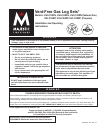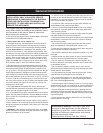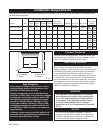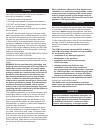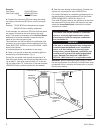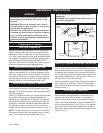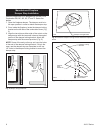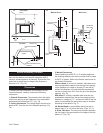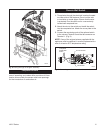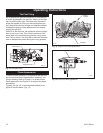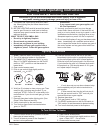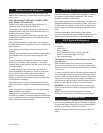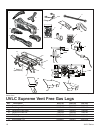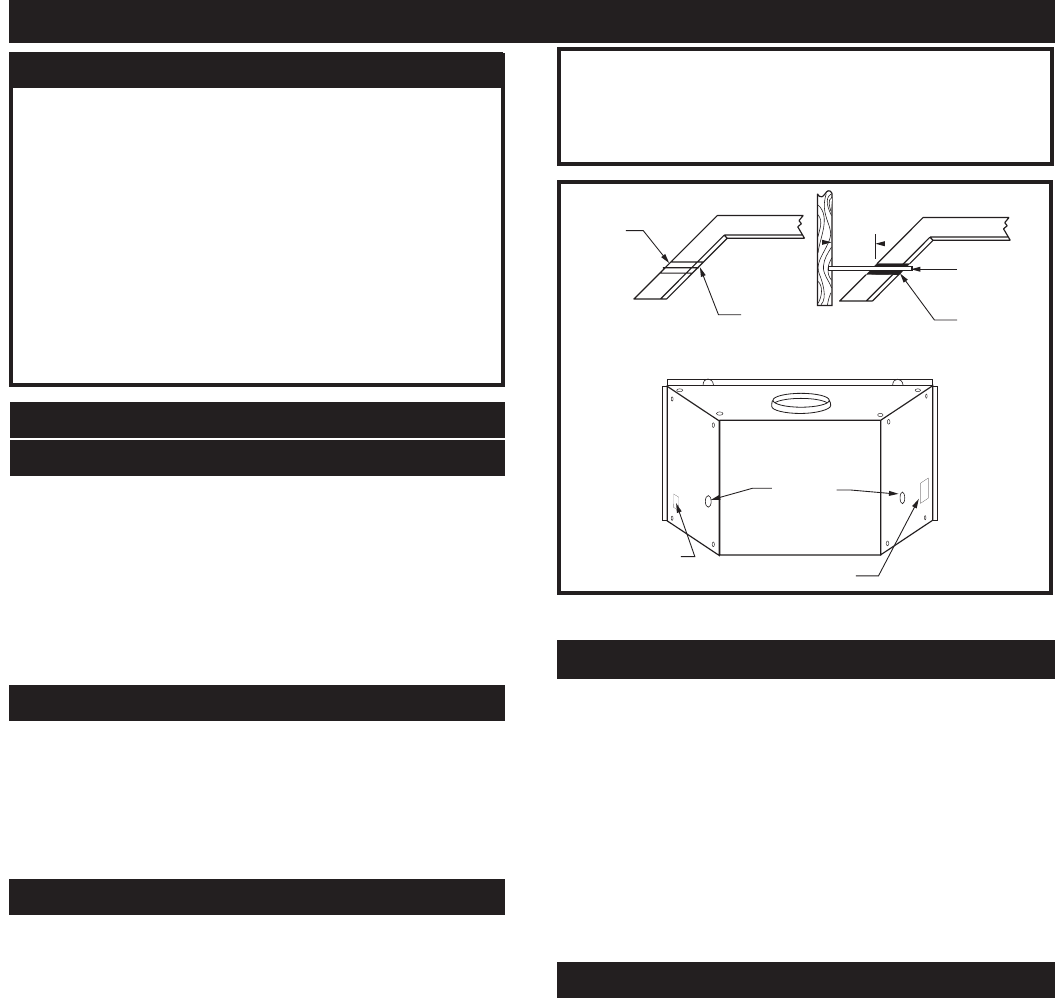
7
UVLC Series
Preparing the Fireplace
Gas Line Preparation
Before connecting the appliance, turn off all gas appli-
ances. Close the main gas valve at the gas meter or
appliances. Close the main gas valve at the gas meter
or LP tank. Make certain there is good ventilation where
the installation will be made. Installation should comply
with all applicable building codes and ANSI Z223.1/
NFPA 54, latest edition or CSA B-149.1. Use LP gas-re-
sistant pipe compound to seal threaded joints.
Installation to Existing Gas Line
There should be a manual ON/OFF valve within easy
reach of the appliance. If not, before installation of the
appliance, make certain a valve is installed. There may
be a second valve on the line close to the point where
the fireplace line branches off the main gas supply line.
During installation, make certain this valve is OFF.
Manufactured Fireplace Preparation
Refer to the manufacturer’s fireplace installation manual
for the specific method of running the gas line into the
fireplace. The following method is typical of most manu-
factured fireplaces.
Insert a 1/2” gas pipe through the gas line tube provided
by the manufacturer, from outside the fireplace, as
marked by the manufacturer. An ON/OFF valve should
be placed within easy reach of the appliance. After the
gas supply is installed, reinstall the insulation removed
from the gas line tube, and pack it around the pipe, to
prevent cold air entry and to protect the gas line. (Fig. 3)
NOTE: The gas pipe should not come into contact with
any wood structure until it has reached a point at least
one (1) inch away from the fireplace side. (Fig. 3)
Masonry Fireplace Installation Preparation
A 1/2 inch gas supply line must be supplied to the
firebox. In most cases, this will require drilling a gas line
access hole through the masonry wall. The gas supply
line should then be sealed in the access hole with mor-
tar. The gas supply line should also have a valve within
easy reach of the appliance. Use only N.P.T. black iron
gas line. (Do not use cast-iron pipe).
Clean the fireplace and chimney (if used) of any ashes,
soot, creosote, or obstruction. This will minimize any
smell from the fireplace. We recommend cleaning by a
chimney sweep.
Flue Damper Preparation
The vented fireplace damper should be fully opened
when operating the appliance as a vented log set. A
damper stop clamp with set screw is provided as a
means to prevent full closure of the fireplace damper
blade. The clamp is designed to prevent accidental clo-
sure of the damper when in use. (Fig. 4) (If the damper
stop cannot be installed, the installer should install a
permanent damper stop that will keep the damper open
minimum of 1¹⁄₂”).
Do not allow fans to blow directly into the fire-
place. Avoid any drafts that alter burner flame
patterns.
WARNING: Do not use a blower insert, heat ex-
changer insert, or other accessory not approved
for use with this gas log set.
DO NOT burn solid fuels in a fireplace where an
unvented gas room heater or log set is installed.
Any outside air ducts and/or ashdumps in the
fireplace must be permanently closed at time of
appliance installation.
Do not install this appliance in bedrooms or
bathrooms.
WARNING: Any change to this heater or its con
-
trols can be dangerous.
WARNING:
Installation Instructions
760/Fplc Access. Ports
968/598UVL/UVHL
7/25/98
Fig. 3 Gas line installation - factory-built fireplaces.
Gas Access
Holes
Outside Air Access
Electrical
Access
Gas Supply
Line
Repack
Insulation
Ceramic
Knockout
Hole in
Outer
Casing
760
1”



